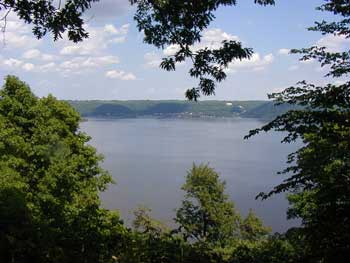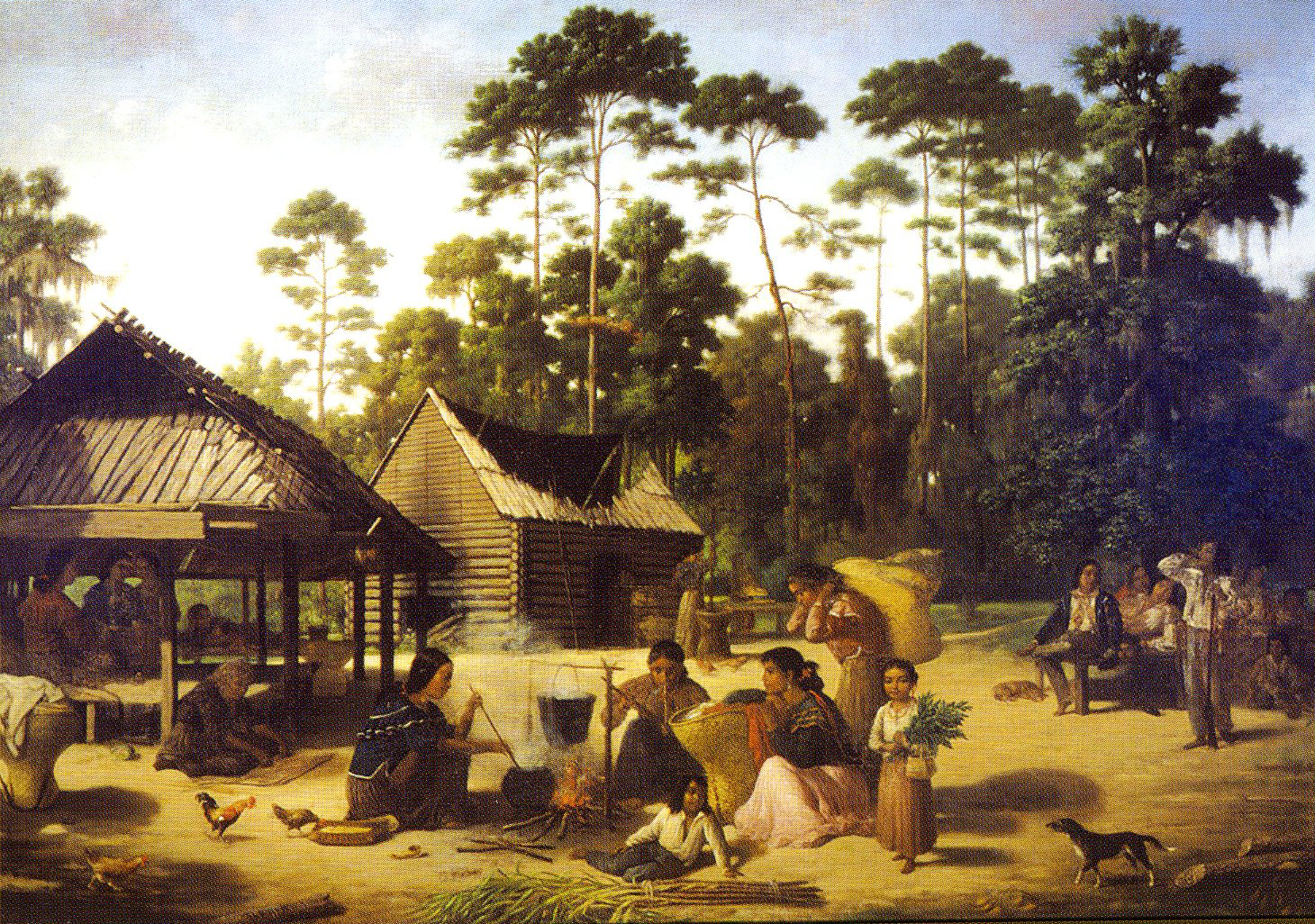|
Frontenac, Minnesota
Frontenac is an unincorporated community and census-designated place (CDP) in Florence Township, Goodhue County, Minnesota, United States, on the Mississippi River. As of the 2010 census, its population was 282. History James Wells established a trading post in the location that would become Frontenac before 1850. He dealt mostly with Native Americans until the railroad was built in the early 1870s. In 1854, the Garrard brothers came upon the area during a hunting trip and bought large tracts of land. By 1857, the community was permanently established with the name of ''Westervelt'' in 1855 to honor the then postmaster, Evert V. Westervelt. Minnesota Historical Society, Minnesota Place Names database, June 2009. The name was changed to ''Frontenac'' in 1860 by the Garrard brothers after Frenchman, Louis de Buade de Frontenac, who was born in 1622. He was the French colonial governor of Canada in 1672–82 and 1689–98. He died in Quebec, Canada on November 28, 1698. There is ... [...More Info...] [...Related Items...] OR: [Wikipedia] [Google] [Baidu] |
Census-designated Place
A census-designated place (CDP) is a concentration of population defined by the United States Census Bureau for statistical purposes only. CDPs have been used in each decennial census since 1980 as the counterparts of incorporated places, such as self-governing cities, towns, and villages, for the purposes of gathering and correlating statistical data. CDPs are populated areas that generally include one officially designated but currently unincorporated community, for which the CDP is named, plus surrounding inhabited countryside of varying dimensions and, occasionally, other, smaller unincorporated communities as well. CDPs include small rural communities, edge cities, colonias located along the Mexico–United States border, and unincorporated resort and retirement communities and their environs. The boundaries of any CDP may change from decade to decade, and the Census Bureau may de-establish a CDP after a period of study, then re-establish it some decades later. Mo ... [...More Info...] [...Related Items...] OR: [Wikipedia] [Google] [Baidu] |
Mississippi River
The Mississippi River is the second-longest river and chief river of the second-largest drainage system in North America, second only to the Hudson Bay drainage system. From its traditional source of Lake Itasca in northern Minnesota, it flows generally south for to the Mississippi River Delta in the Gulf of Mexico. With its many tributaries, the Mississippi's watershed drains all or parts of 32 U.S. states and two Canadian provinces between the Rocky and Appalachian mountains. The main stem is entirely within the United States; the total drainage basin is , of which only about one percent is in Canada. The Mississippi ranks as the thirteenth-largest river by discharge in the world. The river either borders or passes through the states of Minnesota, Wisconsin, Iowa, Illinois, Missouri, Kentucky, Tennessee, Arkansas, Mississippi, and Louisiana. Native Americans have lived along the Mississippi River and its tributaries for thousands of years. Most were ... [...More Info...] [...Related Items...] OR: [Wikipedia] [Google] [Baidu] |
Mississippi Flyway
The Mississippi Flyway is a bird migration route that generally follows the Mississippi, Missouri, and Lower Ohio Rivers in the United States across the western Great Lakes to the Mackenzie River and Hudson Bay in Canada. The main endpoints of the flyway include central Canada and the region surrounding the Gulf of Mexico. The migration route tends to narrow considerably in the lower Mississippi River valley in the states of Missouri, Arkansas, Mississippi, and Louisiana, which accounts for the high number of bird species found in those areas. Some birds use this flyway to migrate from the Arctic Ocean to Patagonia. Typically birds use this route because no mountains or ridges of hills block the path over its entire extent. Good sources of water, food, and cover exist over its entire length. About 40% of all North American migrating waterfowl and shorebirds use this route. The other primary migration routes for North American birds include the Atlantic, Central and Pacific ... [...More Info...] [...Related Items...] OR: [Wikipedia] [Google] [Baidu] |
Frontenac State Park
Frontenac State Park is a state park of Minnesota, United States, on the Mississippi River southeast of Red Wing. The park is notable both for its history and for its birdwatching opportunities. The centerpiece of the park is a , steep limestone bluff overlooking Lake Pepin, a natural widening of the Mississippi. The bluff is variously called Garrard's Bluff or Point No-Point, the latter name coming from riverboat captains because of the optical illusion that it protruded into the Mississippi River. There is a natural limestone arch on the blufftop called In-Yan-Teopa, a Dakota name meaning "Rock With Opening". Park lands entirely surround the town of Frontenac, once a high-class resort at the end of the 19th century. Geology Limestone was laid down 500 million years ago as organic sediments settled to the bottom of a shallow sea that covered much of the Midwest. Much later Glacial River Warren carried torrents of runoff from the melting glaciers of the last ice ag ... [...More Info...] [...Related Items...] OR: [Wikipedia] [Google] [Baidu] |
Mississippi River W Lake Pepin In Background At Frontenac State Park
Mississippi () is a state in the Southeastern region of the United States, bordered to the north by Tennessee; to the east by Alabama; to the south by the Gulf of Mexico; to the southwest by Louisiana; and to the northwest by Arkansas. Mississippi's western boundary is largely defined by the Mississippi River. Mississippi is the 32nd largest and 35th-most populous of the 50 U.S. states and has the lowest per-capita income in the United States. Jackson is both the state's capital and largest city. Greater Jackson is the state's most populous metropolitan area, with a population of 591,978 in 2020. On December 10, 1817, Mississippi became the 20th state admitted to the Union. By 1860, Mississippi was the nation's top cotton-producing state and slaves accounted for 55% of the state population. Mississippi declared its secession from the Union on January 9, 1861, and was one of the seven original Confederate States, which constituted the largest slaveholding states in the nati ... [...More Info...] [...Related Items...] OR: [Wikipedia] [Google] [Baidu] |
Wisconsin Evangelical Lutheran Synod
The Wisconsin Evangelical Lutheran Synod (WELS), also referred to simply as the Wisconsin Synod, is an American Confessional Lutheran denomination of Christianity. Characterized as theologically conservative, it was founded in 1850 in Milwaukee, Wisconsin. As of 2021, it had a baptized membership of 344,244 in 1,264 congregations, with churches in 47 US states and 4 provinces of Canada. The WELS also does gospel outreach in 40 countries around the world. It is the third largest Lutheran denomination in the United States. The WELS school system is the fourth largest private school system in the United States. The WELS is in fellowship with the Evangelical Lutheran Synod (ELS) and is a member of the Confessional Evangelical Lutheran Conference (CELC), a worldwide organization of Lutheran church bodies of the same beliefs. Belief and practice Doctrinal standards The WELS subscribes to the Lutheran Reformation teaching of ''Sola scriptura''—"by Scripture alone." It hold ... [...More Info...] [...Related Items...] OR: [Wikipedia] [Google] [Baidu] |
Census
A census is the procedure of systematically acquiring, recording and calculating information about the members of a given population. This term is used mostly in connection with national population and housing censuses; other common censuses include censuses of agriculture, traditional culture, business, supplies, and traffic censuses. The United Nations (UN) defines the essential features of population and housing censuses as "individual enumeration, universality within a defined territory, simultaneity and defined periodicity", and recommends that population censuses be taken at least every ten years. UN recommendations also cover census topics to be collected, official definitions, classifications and other useful information to co-ordinate international practices. The UN's Food and Agriculture Organization (FAO), in turn, defines the census of agriculture as "a statistical operation for collecting, processing and disseminating data on the structure of agriculture, coverin ... [...More Info...] [...Related Items...] OR: [Wikipedia] [Google] [Baidu] |
Canada
Canada is a country in North America. Its ten provinces and three territories extend from the Atlantic Ocean to the Pacific Ocean and northward into the Arctic Ocean, covering over , making it the world's second-largest country by total area. Its southern and western border with the United States, stretching , is the world's longest binational land border. Canada's capital is Ottawa, and its three largest metropolitan areas are Toronto, Montreal, and Vancouver. Indigenous peoples have continuously inhabited what is now Canada for thousands of years. Beginning in the 16th century, British and French expeditions explored and later settled along the Atlantic coast. As a consequence of various armed conflicts, France ceded nearly all of its colonies in North America in 1763. In 1867, with the union of three British North American colonies through Confederation, Canada was formed as a federal dominion of four provinces. This began an accretion of provinces and ... [...More Info...] [...Related Items...] OR: [Wikipedia] [Google] [Baidu] |
Quebec
Quebec ( ; )According to the Government of Canada, Canadian government, ''Québec'' (with the acute accent) is the official name in Canadian French and ''Quebec'' (without the accent) is the province's official name in Canadian English is one of the thirteen provinces and territories of Canada. It is the List of Canadian provinces and territories by area, largest province by area and the second-largest by Population of Canada by province and territory, population. Much of the population lives in urban areas along the St. Lawrence River, between the most populous city, Montreal, and the provincial capital, Quebec City. Quebec is the home of the Québécois people, Québécois nation. Located in Central Canada, the province shares land borders with Ontario to the west, Newfoundland and Labrador to the northeast, New Brunswick to the southeast, and a coastal border with Nunavut; in the south it borders Maine, New Hampshire, Vermont, and New York (state), New York in the United ... [...More Info...] [...Related Items...] OR: [Wikipedia] [Google] [Baidu] |
Louis De Buade De Frontenac
Louis de Buade, Comte de Frontenac et de Palluau (; 22 May 162228 November 1698) was a French soldier, courtier, and Governor General of New France in North America from 1672 to 1682, and again from 1689 to his death in 1698. He established a number of forts on the Great Lakes and engaged in a series of battles against the English and the Iroquois. In his first term, he supported the expansion of the fur trade, establishing Fort Frontenac (in what is now Kingston, Ontario) and came into conflict with the other members of the Sovereign Council over its expansion and over the corvées required to build the new forts. In particular, despite the opposition of bishop François de Laval, he supported selling brandy to the aboriginal tribes, which Laval considered a mortal sin. The conflict with the Sovereign Council led to his recall in 1682. His second term was characterised by the defence of Quebec from an English invasion during King William's War, a successful campaign against ... [...More Info...] [...Related Items...] OR: [Wikipedia] [Google] [Baidu] |
Minnesota Historical Society
The Minnesota Historical Society (MNHS) is a nonprofit educational and cultural institution dedicated to preserving the history of the U.S. state of Minnesota. It was founded by the territorial legislature in 1849, almost a decade before statehood. The Society is named in the Minnesota Constitution. It is headquartered in the Minnesota History Center in downtown Saint Paul. Although its focus is on Minnesota history it is not constrained by it. Its work on the North American fur trade has been recognized in Canada as well. MNHS holds a collection of nearly 550,000 books, 37,000 maps, 250,000 photographs, 225,000 historical artifacts, 950,000 archaeological items, of manuscripts, of government records, 5,500 paintings, prints and drawings; and 1,300 moving image items. '' MNopedia: The Minnesota Encyclopedia'', is since 2011 an online "resource for reliable information about significant people, places, events, and things in Minnesota history", that is funded through a Leg ... [...More Info...] [...Related Items...] OR: [Wikipedia] [Google] [Baidu] |







